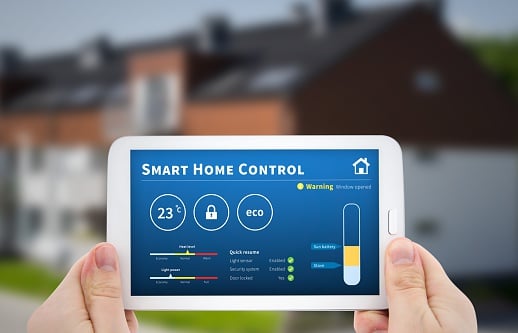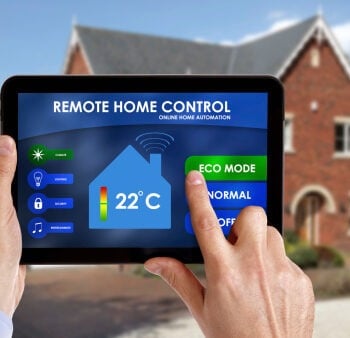- On February 28, 2017

New technologies in the HVAC industry are making heating and cooling of homes more efficient than ever. Today, HVAC systems have the ability to communicate between the indoors and the outdoors, reducing heat loss and helping to maximize the dehumidifying process. These new technologies allow HVAC systems to run more quietly and makes them easier to program.
Smartphone Technologies
Many of the new changes are actually in the HVAC components and the systems’ controls, but a number of these new changes are in external technologies. So-called “Smart Homes” are becoming more and more commonplace as Smartphone capabilities continue to expand.
These “smart” technologies allow users to control and monitor their homes or businesses from anywhere in the world, making changes to temperature settings and controls remotely.
Technological Advancements
These new technological advancements are made possible because interconnection is at an all-time high. The ability to communicate with our machines is becoming simpler every day.
This means that utility bills are getting lower, the efficiency of heating and cooling systems is getting better, the strain on the environment is being reduced, and we are reaching a higher level of comfort.
Learning Thermostats
One of the primary recent advancements in the HVAC industry is the Learning Thermostat, which is almost a virtual assistant. It learns what temperatures you like and it automatically adjusts the room you are in to your settings. This Learning Thermostat turns itself off when you leave the room. It is controllable by Wi-Fi so you can warm up your bathroom before you take a shower each day (unless the Learning Thermostat has already figured out you like the bathroom warmer at that time of day) or cool off the house before you get home from work.
The Learning Thermostat also has the ability to turn off during times of peak demand. This means you save money. With the Learning Thermostat, the process is completely automated.
Self-Diagnosis
The newer HVAC systems can also self-diagnose and even repair themselves, much like a computer does. It may seem that this type of technology would cause repair personnel to worry about their job security, but this is not the case. Technicians will still be needed to follow up on those reports and replace worn-out parts.
Variable Refrigerant Flow
Most of the energy loss in our homes comes from cooling or warming an entire house when only one room really needs the HVAC system to turn on. This can happen in homes that have shade on just one side, and sun on the other. With a variable flow, users can have heat in one part of the building and cooler air in a different part of the building while maintaining the utmost in efficiency.
Howard Air & Plumbing
At Howard Air & Plumbing, we know these are just some of the innovations that are changing the face of the HVAC industry and we are proud to stay on top of the latest technology for our customers. Please contact us today with any questions you have about your HVAC system.

















0 Comments